This article is part of a series on Edomae sushi.
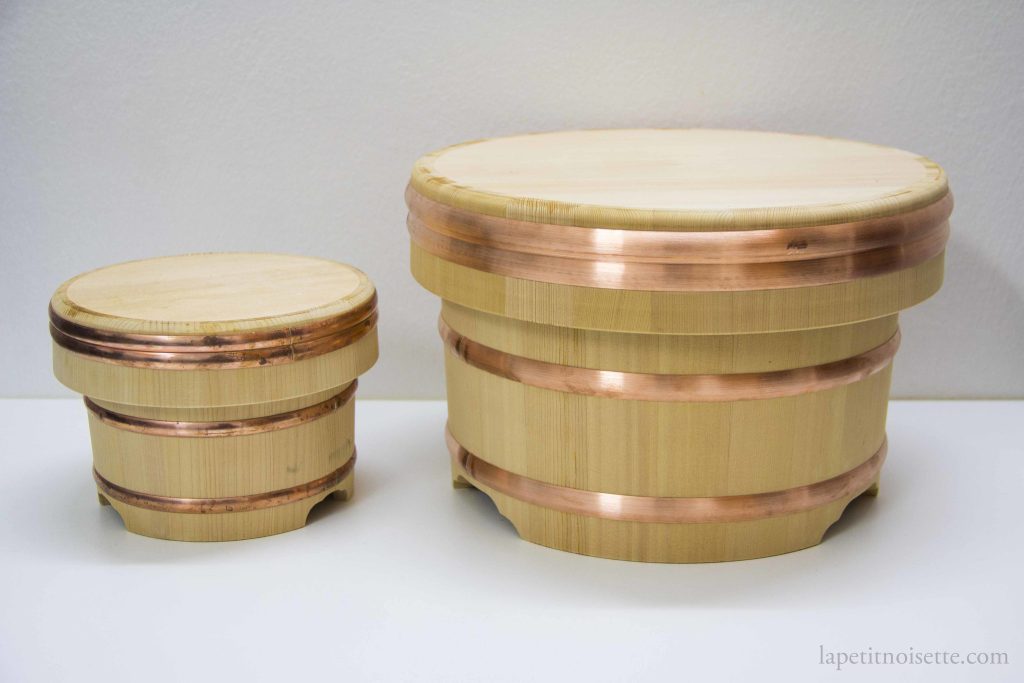
Rice served and used in a traditional Edomae sushi restaurant is always stored lukewarm, ready to be brought down to room temperature when shaped into nigiri. The utensils used to store, cook and mix the rice all use traditional measurements and thus it is worth is delving into the specifics of these measurements.
In terms of traditional rice measurements:
- 1 sho (升) is around a volume of 1.8 litres, which roughly translates to 1.5kg of rice.
- 1 go (合) is 10 times smaller than 1 sho (升) and therefore has a volume of 180ml which roughly translates to 150g of rice.
A cup of rice is one go (合). Conventionally, most sushi restaurants cook 2 sho of rice at a time, which is around 20 go of rice, or 3kg. Instead of 2 sho, our restaurant cooks 5 go each time, or 750g of cooked rice. This is because we want our guest to eat fresh rice. Furthermore, the weight of more rice in the bucket would crush the rice underneath, ruining the texture. 5 go of rice is just right for the rice not to be crushed.
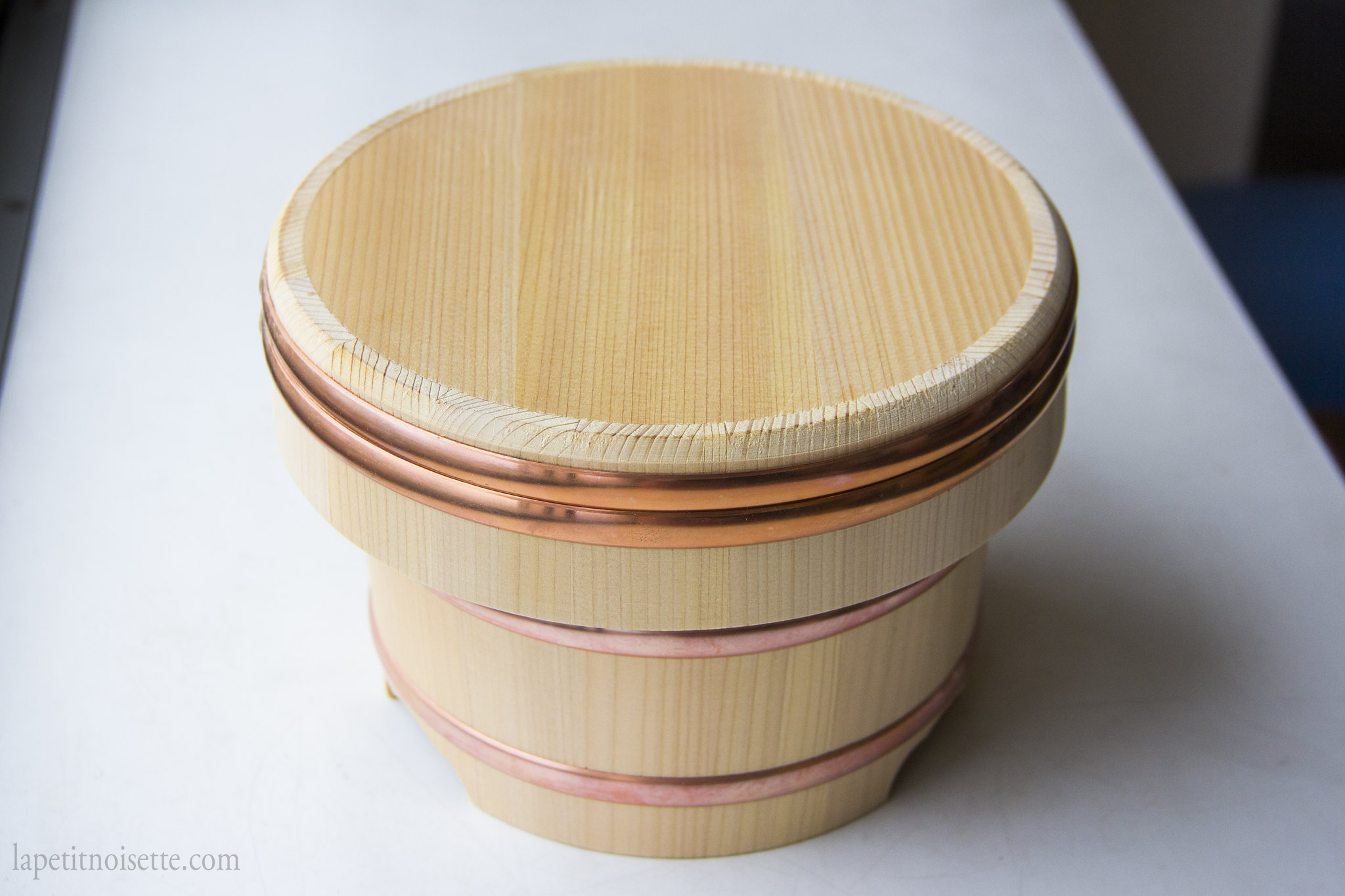
We serve each customer 14 to 15 pieces of nigiri and 6 starters per person. That means for a seating of 10 people, that makes roughly 150 pieces of nigiri. With 750g of rice, we can make around 75 to 80 pieces of nigiri. Seeing that we cook rice twice, we have enough rice to cover all the guest, plus extra rice for additional order/rolls.
If rice is cooked with a Donabe like in our restaurant, for 5 go of rice, we start with 10 minutes of high heat, followed by 10 minutes of low heat, follow by 10 minutes of rest. By cooking it this way, there is no residual scorched rice at the bottom of the pot. This scorched rice is actually known as Kamasoko Okege (釜底お焦げ), and is the most delicious part of the rice. However, it is not suitable to be used in nigiri. When cooking smaller amounts of rice in a Donabe, there will be residual scorched rice, which means that the total useable rice for nigiri is less, therefore the amount of vinegar must be adjusted.
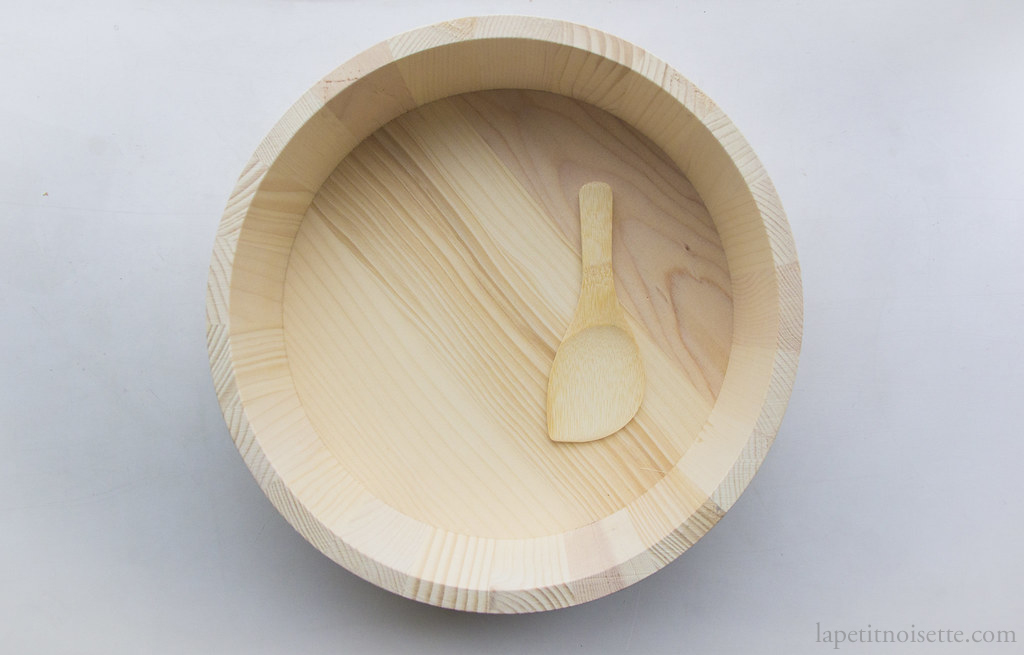
Traditionally during the Meiji Era, sushi nigiri was made for a bite and a half. Today however, nigiri is made for a single bite. I was told that this was because of rice shortages during the war, which mean’t that resources had to be stretched to go further.
When mixing the sushi rice together, a tub made from cyprus wood known as a hangiri (半切) and a wooden paddle known as a shamoji (杓文字, しゃもじ) are used. Both the hangiri and shamoji are moisten with water before use. This is to prevent rice from sticking to the shamoji, and to prevent the vinegar being absorbed by the wood. If the wood is dry and absorbs some of the vinegar, the rice will not be seasoned correctly. A cutting motion is used to spread the vinegar around as to prevent the rice grains from being crushed and mushed.
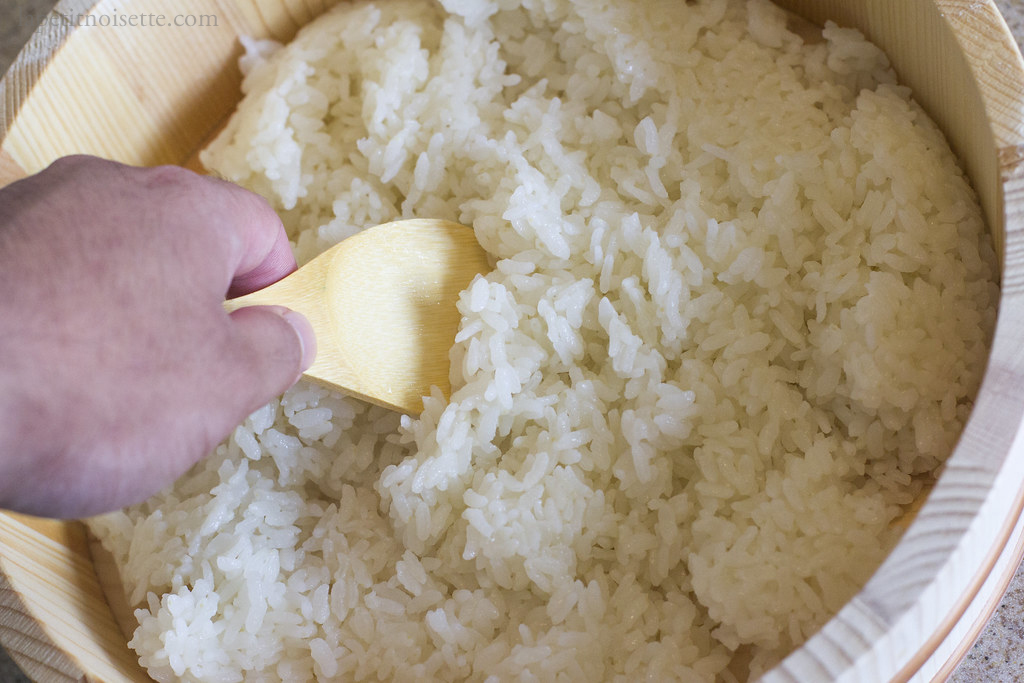
The rice is then transferred into a wooden basin with a lid (known as an Ohitsu/お櫃) using your hands wrapped with a cloth (known as a Fukin/ふきん). The cloth is used to transfer the rice instead of a scoop or paddle because it is more gentle. The Ohitsu is then stored in a straw basket to maintain the warmth of the rice. The straw basket is known as a warabitsu or warazumi (わらいずみ/藁櫃). The Ohitsu is made from Kiso sawara cypress trees that are more than 100 years old. The wood is able to absorb the steam from the rice, preventing it from going soggy and keeping it fresh. The warabitsu in turn, helps to maintain the temperature of the rice. In the restaurant, we kept a plastic bed warmer filled with hot water and wrapped in a cloth bag at the bottom of the basket to provide additional heat to the rice. A warabitsu is actually very hard to find nowadays due to the labour needed to hand weave them. They need to be ordered in advance and are extremely expensive.
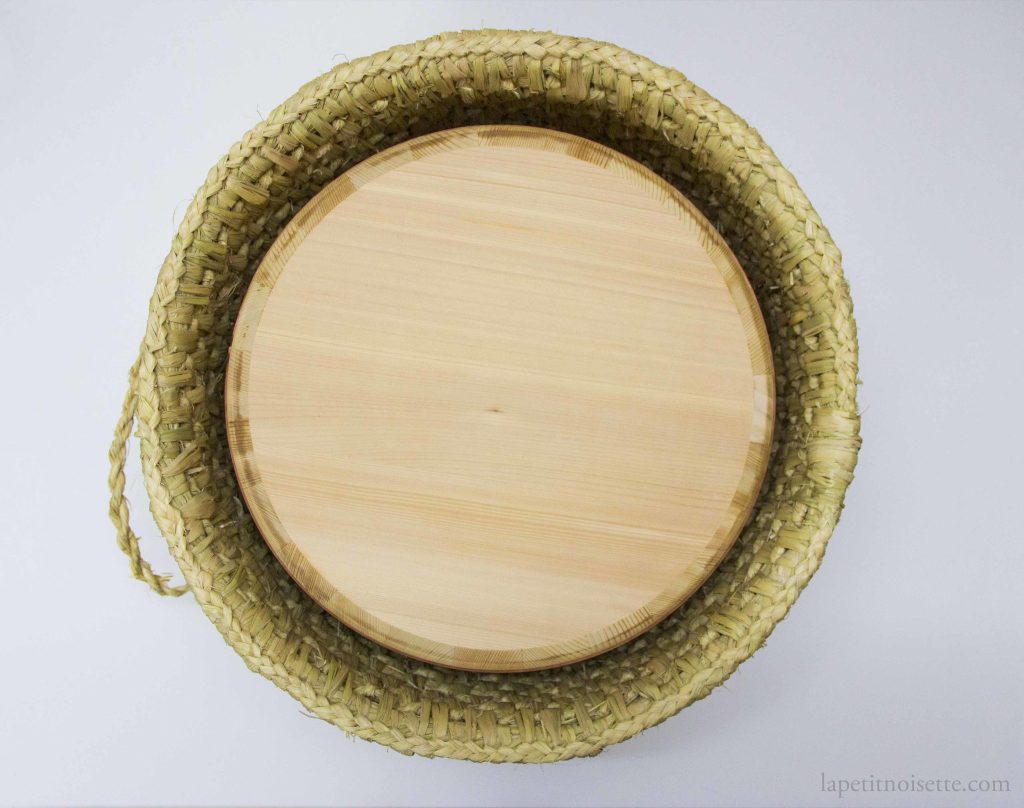
To begin, wet the hangiri and shamoji in water. Transfer the steamed rice from the Donabe into the hangiri excluding any scorched rice at the bottom.
Next, form the rice into a mound and sprinkle the vinegar mix (awasezu/合わせ酢) on the mound.
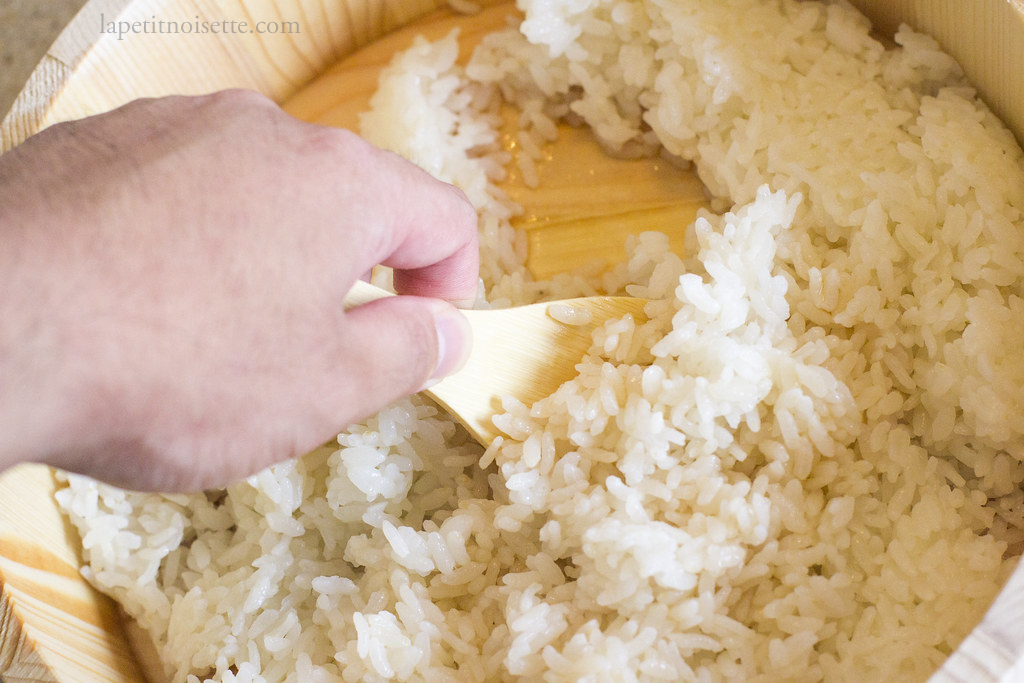
Reform the mount and repeat the cutting motion. Be careful not to crush any of the rice.
Transfer the rice to a Ohitsu and store the Ohitsu in a Warabitsu.
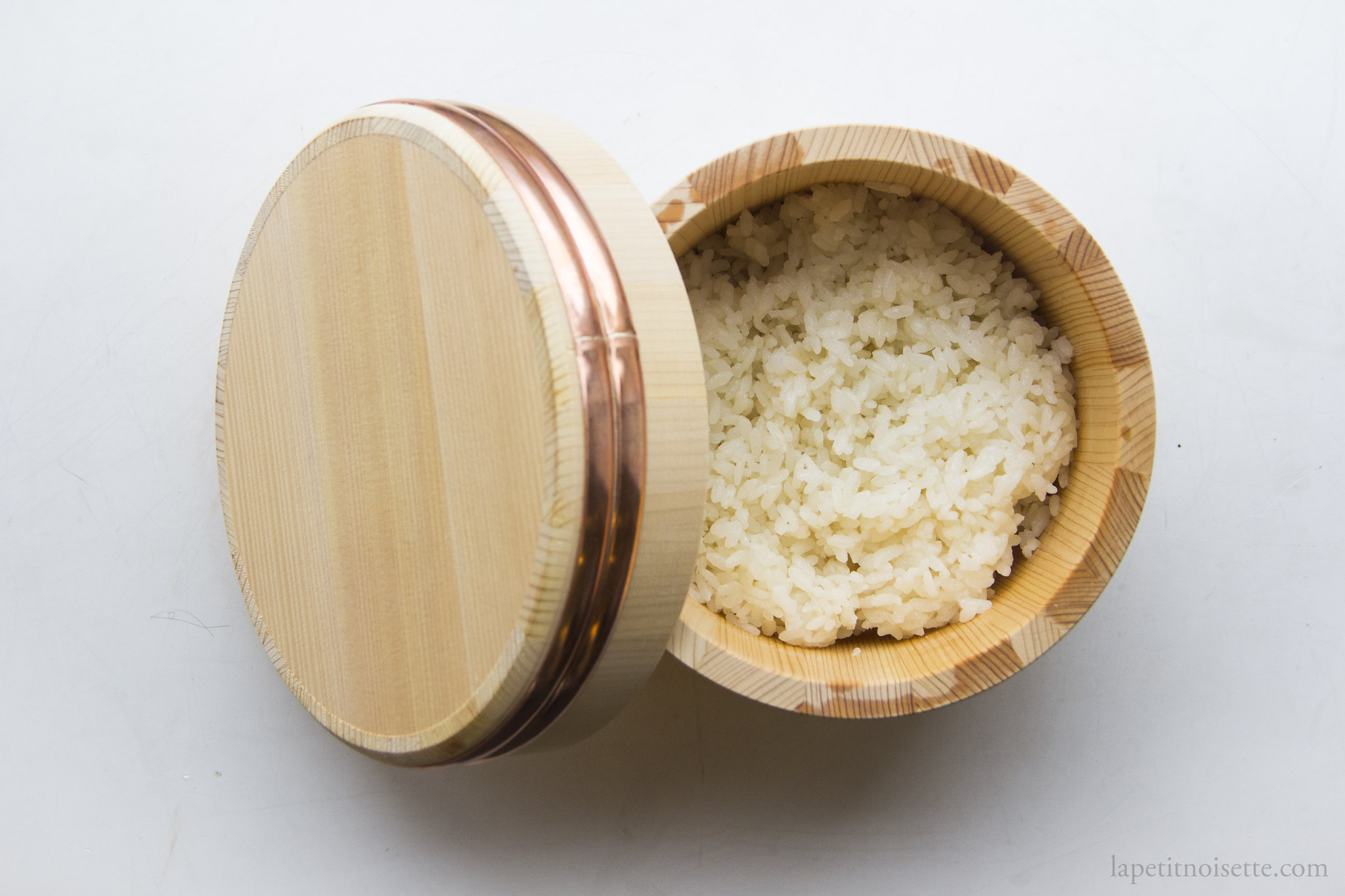
On finding and sourcing/buying a warabitsu or warazumi (わらいずみ/藁櫃):
The price of a warabitsu fluctuates depending on demand as each one is handmade to order and takes an extremely long time to hand weave. The warabitsu that I use above was brought for 64 000¥ as of 2019, but I have come across seller in Tokyo’s famous kappabashi selling them for over a 100 000¥.
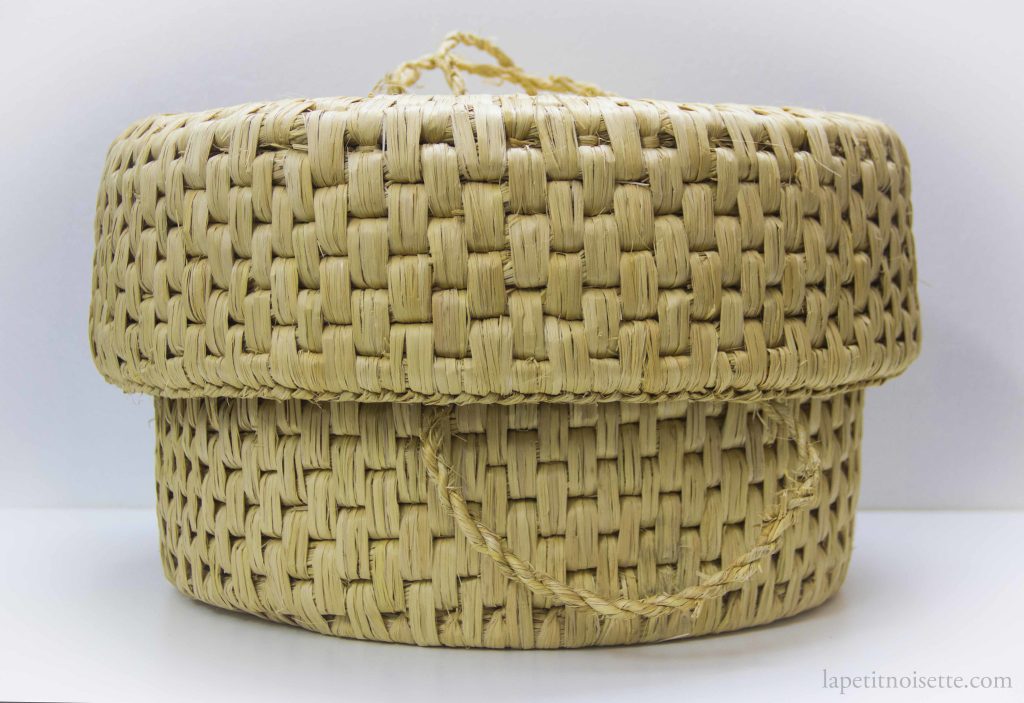
Excellent article.
One question:
What is the ideal weight for a nigiri? The fish/rice ratio? 17 grams of rice?
There honestly isn’t one correct answer. Different chefs will vary the ratio of fish to rice depending on their style. Its best to experiment for yourself and experience eating out more to determine it for yourself.
Hi! Is it absolutely necessary to have both an ohitsu and a hangiri? If I was to purchase just one, which would you recommend? Or maybe is one better to get a cheap one and one better to get a better one? My funds are limited but I really want to improve how long my rice stays in good condition while I’m making nigiri for my friends. Additionally, would you recommend using a sushi net? Sorry for all the questions and thank you for this wonderful page!!!
Hello, it’s not absolutely necessary, you could just use the keep warm function on the rice cooker.
Thank you. So what would be the process be? Cook the rice in the rice maker, then move it to the hangiri and apply the vinegar mix, and then put back in the rice cooker to keep warm and take the rice out as needed while making nigiri?